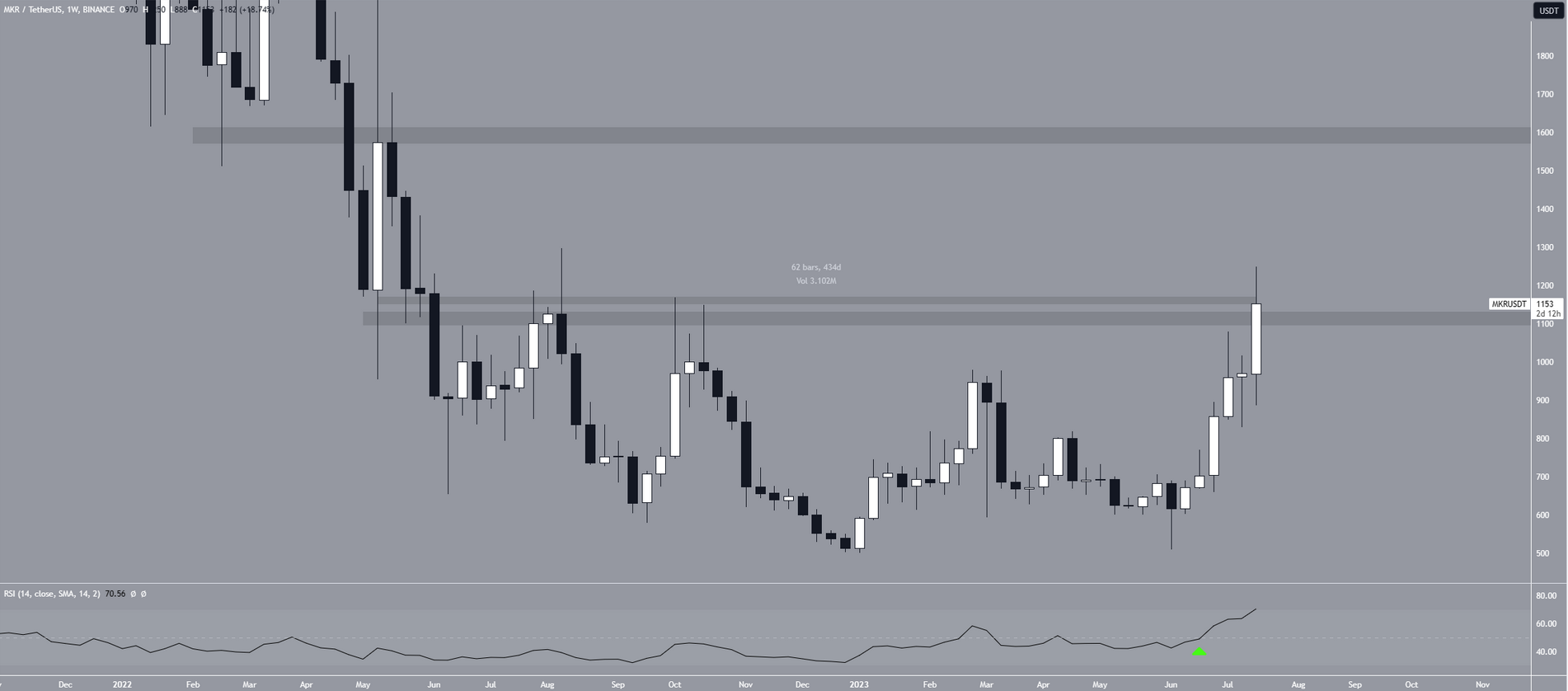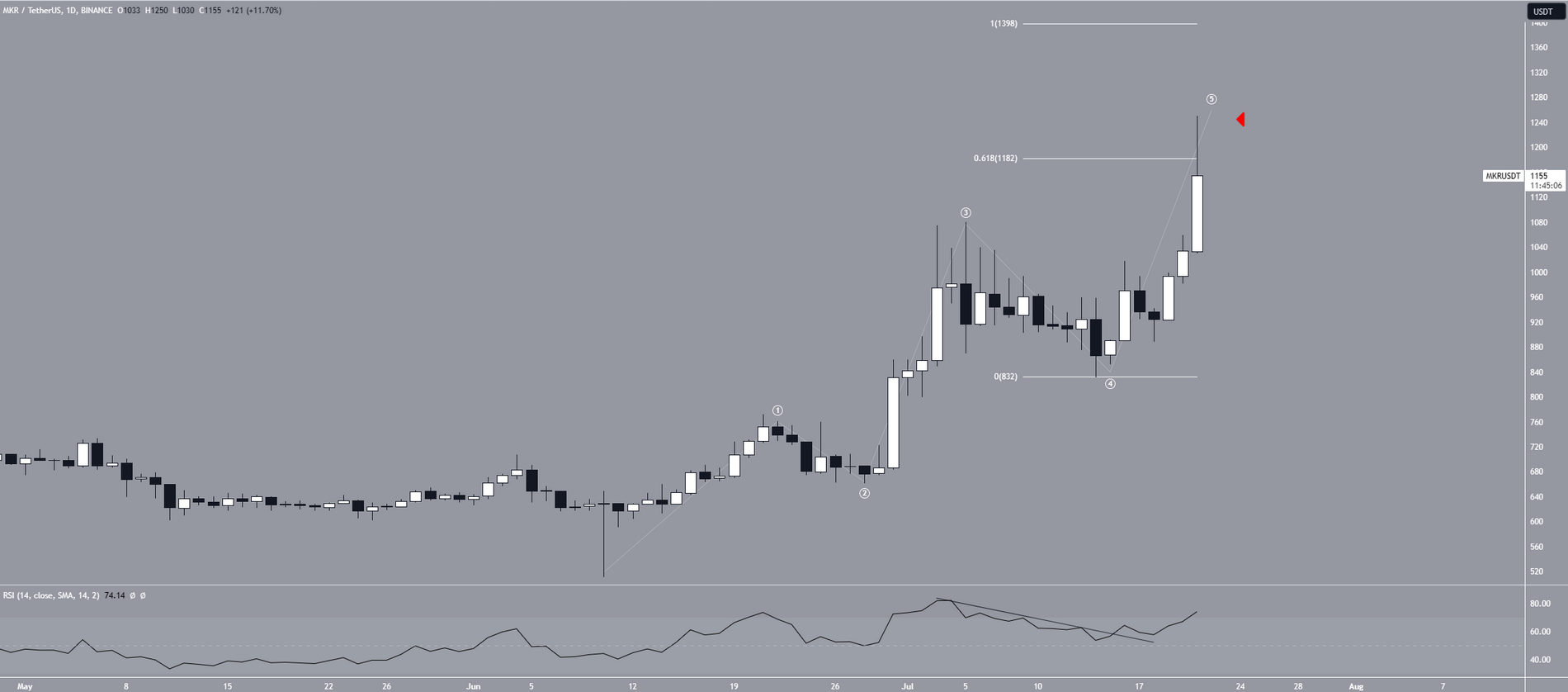Uncertainty prevails in the cryptocurrency markets as BTC has not been able to sustain closes above $30,000. We have already experienced this before every Fed meeting. However, some altcoins have not experienced significant losses during this process. Moreover, their successful preservation of support levels increases hope.
Maker (MKR)
The price of Maker (MKR) has been rising since the beginning of June and reached the highest level of the year at $1,250 on July 21st. The price has reached a close above an important horizontal resistance area, indicating that the uptrend may continue. Furthermore, daily timeframe readings show an upward trend, although a local peak may be set in the near future.

Since dropping to $511 at the beginning of June, the price of MKR has significantly increased. The increase reached its peak at $1,250 on July 21st, marking the highest level of the year. Moreover, the MKR price appears to have broken out of the $1,150 horizontal resistance area. The resistance had remained in place for 434 days. The breaking of such long-standing resistances indicates a possible reversal of the long-term downtrend.
MKR Coin Chart Analysis
The daily chart provides an important signal with Elliot wave analysis. The most likely wave count indicates that the price is in the fifth and final wave of an upward movement that began on June 10th. If the count is correct, the price may initiate a new attack towards the $1,400 region. Once the rally is completed, MKR Coin investors will start waiting for the right time to sell. If demand continues in this area, the $1,600 peak may also be tested.

Currently, the price is struggling at $1,180. The rejection from this level has formed a long upper wick, which is a sign of selling pressure. Therefore, if the price fails to close above this region, it will indicate the completion of the upward movement and the start of a correction. Consequently, MKR Coin investors may have to jump off the trend early. In this scenario, the target of the rapid decline will be the $840 horizontal support area.

 Türkçe
Türkçe Español
Español









